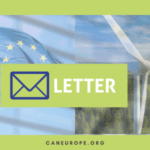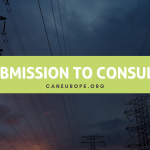To: Ursula von der Leyen, President of the European Commission, Frans Timmermans, Executive Vice-President of the European Commission, Thierry Breton, European Commissioner for Internal Market, Kadri Simson, European Commissioner for Energy
Cc: Ditte-Juul Joergensen, Kerstin Jorna, Director Generals DG Energy and DG Grow
Brussels, 9 March 2021
European Commission to show leadership in ECH2A governance and decision making
Dear President and Executive-Vice President,
Dear Commissioners,
The European Commission has put a lot of effort into developing the European Clean Hydrogen Alliance (ECH2A), a stakeholder forum aiming “to identify and build up a substantial pipeline of investment projects along the hydrogen value chain, with a view to shift away from fossil fuels, create a clean hydrogen market contributing to growth and jobs, and reduce greenhouse gas emissions.” [1] We, the undersigned NGOs, recognise this effort and appreciate the open process.
The ECH2A was created to support the Commission’s Hydrogen Strategy [2] which requires the deployment of clean hydrogen [3] by defining strategic objectives for phasing in renewable hydrogen over the next ten years. NGOs have joined the ECH2A only by adding a disclaimer, stressing that renewable hydrogen deployment for identified priority uses (energy intensive industry and transport) must be the Alliance’s first and only objective.
However, we have observed that the process is missing a clear vision and guidelines on decision making and governance. The approach of “inclusiveness”, meaning that all types of hydrogen, end-use applications and technologies are being considered without real differentiation, makes it impossible to have a clear prioritisation of renewable hydrogen projects over low carbon projects. In addition, the Alliance’s work is running in parallel to important, but not yet finalised, regulatory decisions (TEN-E, Delegated Acts on Taxonomy) impacting heavily on the desired end products.
The Commision, as guardian of policy coherence and the institution framing this Alliance, should take a much more active leadership role and decide on highly political issues such as project eligibility criteria, project selection and financing. In cases where an issue is too immature for a decision to be taken, the Commission should call for its postponement until relevant regulatory processes are finalised. The current lack of clarity of the process is unhealthy and will not lead to the desired result which is to kick-start a hydrogen economy contributing to climate neutrality by 2040. This should be done by identifying viable investment projects that significantly reduce GHG emissions with a view to: 1. get additional zero carbon (i.e. renewable) hydrogen off the ground, and 2. create market push and demand pull for zero carbon hydrogen in sectors where it is the most efficient decarbonisation option.
Yours sincerely
Wendel Trio, Director, CAN Europe
Justin Wilkes, Executive Director, ECOS
Patrick ten Brink, Deputy Secretary General, EEB
Eva Schmid, Team Leader German and European Climate Policy, Germanwatch
Adrien Assous, Delegated Director, Sandbag
William Todts, Executive Director, Transport & Environment
Ester Asin, Director, WWF EPO
[1] Vademecum on the functioning of the roundtables of the European Clean Hydrogen Alliance.
[2] A hydrogen strategy for a climate-neutral Europe, COM(2020) 301 final.
[3] The Hydrogen Strategy explicitly states that clean hydrogen refers to renewable hydrogen.
[4] Replying to NGO criticism the Commission has assured that final decisions on projects and financing would be taken by the Commission. Previous input on governance can be found here.
ANNEX
The initial suggestion of a carbon footprint criterion as part of project eligibility criteria was made by Hydrogen Europe, an industry association with a large membership of fossil fuel companies, co-organizing with the Commission the Alliance’s Secretariat. [4] Their proposed threshold (CertifHy, 4,4 tCO2eq/tHydrogen) allows for “low carbon” (i.e. fossil based) hydrogen to be considered as “clean” (i.e. renewable) hydrogen and making it eligible for financial support from public sources. This has been criticized by different stakeholders including academia, industry, the Commission and NGOs. A mentioned alternative is the independent and expert-based threshold from the taxonomy delegated act, which is still under political negotiations. A decision on this highly political topic is supposed to be taken by the Roundtable responsible for Hydrogen Production, which is more than questionable from a governance point of view.
A similar issue arises in the Transmission and Distribution Roundtable which should be prioritising targeted repurposing and new hydrogen infrastructure over retrofitting (i.e. blending) existing infrastructure. Currently blending is given high priority even though this would be in stark contrast with the revised Commission proposal on energy infrastructure (TEN-E) and has also been classified as a low priority option in the European Hydrogen Strategy. Also, instead of defining project criteria that increase the penetration of European Hydrogen market with substantial amounts of clean hydrogen, while making sure that priority sectors are being supplied, current criteria stay too vague and do not prevent oversizing or stranded asset risks.
In the Mobility Roundtable, hydrogen uses in transport are suggested without any reference to discussions in the Hydrogen Production Roundtable about near-term volumes of hydrogen available or prices. Unrealistic near-term projections for fuel cell road vehicles (not a priority sector) are put forward, which are disconnected from the actual plans of car and truck manufacturers.
The Hydrogen in Buildings Roundtable does not provide any targeted end-use criteria and most projects focus on blending hydrogen into hybrid boilers, thus failing to deliver full decarbonisation in the heating sector. Added to that, documents provided to roundtable members are largely overstating the readiness and availability of hydrogen and hydrogen-ready technology for heating to justify investments.
More joined-up thinking about competing hydrogen uses between different Roundtables is much-needed. As stated above, the European Commission should take leadership and provide guidance on the basis of the ambition level and the key sectors that were identified in the EU Hydrogen Strategy.


